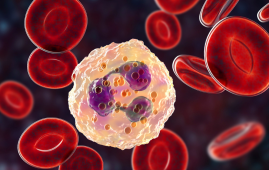

According to a recent study published in the peer-reviewed Journal of Neurotrauma, over 30% of traumatic brain injury (TBI) patients who did not receive life-sustaining treatment (WLST) were able to regain some degree of independence.
Yelena Bodien, PhD, of Harvard Medical School and Massachusetts Hospital, together with her coauthors, issued a warning, stating that when the likelihood of WLST is high, death or serious disability is a frequent consequence. In patients who passed away following WLST, the authors looked into the chances of survival and independent recovery following severe traumatic brain injury. They made a comparison between acute TBI patients who passed away following WLST and those who did not have WLST removed.
Traditionally, decisions surrounding WLST withdrawal for TBI patients have been guided by the assumption of poor prognosis. This often leads families to opt for withdrawal, fearing a prolonged state of minimal consciousness or severe disability for their loved one. However, Dr. Bodien’s study challenges this notion. By demonstrating a significant possibility of regaining independence even after WLST is withheld, the research suggests the need for revised communication strategies. Doctors should focus on presenting a more nuanced prognosis, outlining the potential for meaningful recovery alongside the risks involved in forgoing WLST. This would empower families to make informed decisions based on a more complete picture of their loved one’s potential future.
“Our results support recent calls for a cautionary approach toward early WLST after acute TBI and suggest that a lifetime in a vegetative state or with a lower severe disability is not a common outcome, even after a very serious injury,” stated the investigators.
“My congratulations to Dr. Bodien and colleagues for this carefully articulated communication. Their findings have important implications for the practice of critical care medicine around the world. Everyone who is involved in the care of patients with acute ‘severe’ traumatic brain injury should read this article carefully.” – David L. Brody, MD, PhD, Editor-in-Chief of Journal of Neurotrauma
For more information: Recovery Potential in Patients Who Died After Withdrawal of Life-Sustaining Treatment: A TRACK-TBI Propensity Score Analysis, Journal of Neurotrauma, doi.org/10.1089/neu.2024.0014
more recommended stories
 Silica Nanomatrix Boosts Dendritic Cell Cancer Therapy
Silica Nanomatrix Boosts Dendritic Cell Cancer TherapyKey Points Summary Researchers developed a.
 Vagus Nerve and Cardiac Aging: New Heart Study
Vagus Nerve and Cardiac Aging: New Heart StudyKey Takeaways for Healthcare Professionals Preserving.
 Cognitive Distraction From Conversation While Driving
Cognitive Distraction From Conversation While DrivingKey Takeaways (Quick Summary) Talking, not.
 Fat-Regulating Enzyme Offers New Target for Obesity
Fat-Regulating Enzyme Offers New Target for ObesityKey Highlights (Quick Summary) Researchers identified.
 Spatial Computing Explains How Brain Organizes Cognition
Spatial Computing Explains How Brain Organizes CognitionKey Takeaways (Quick Summary) MIT researchers.
 Gestational Diabetes Risk Identified by Blood Metabolites
Gestational Diabetes Risk Identified by Blood MetabolitesKey Takeaways (Quick Summary for Clinicians).
 Phage Therapy Study Reveals RNA-Based Infection Control
Phage Therapy Study Reveals RNA-Based Infection ControlKey Takeaways (Quick Summary) Researchers uncovered.
 Pelvic Floor Disorders: Treatable Yet Often Ignored
Pelvic Floor Disorders: Treatable Yet Often IgnoredKey Takeaways (Quick Summary) Pelvic floor.
 Urine-Based microRNA Aging Clock Predicts Biological Age
Urine-Based microRNA Aging Clock Predicts Biological AgeKey Takeaways (Quick Summary) Researchers developed.
 Circadian Control of Neutrophils in Myocardial Infarction
Circadian Control of Neutrophils in Myocardial InfarctionKey Takeaways for HCPs Neutrophil activity.

Leave a Comment